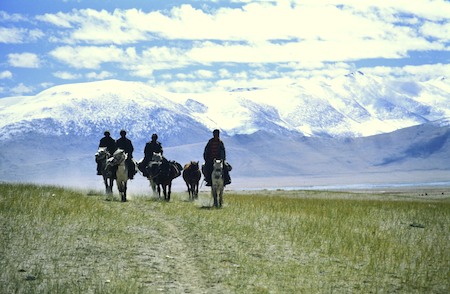Escape To Ladakh

Ladakh welcomed its first tibetan exiles soon after the dalai lama’s escape. The large bulk of refugees came in the early sixties.
Most of them originated from Western Tibet : Ladakh was the nearest foreign land, and it was near indeed. Most of the refugees simply walked across the border with their herds of sheep and yak. Some of them were already familiar with the place. That was the case of Tsepak Sindul, then a poor peasant from Rawang, now a refugee in his seventies. "In Tibet, we were very poor, he explains. Our land was too small to feed our family, so we had to rent ourselves to richer families who employed us as shepherds for their animals. But that was not enough so we engaged in salt trading with neighbouring Ladakh. In wintertime, we drove our little caravan of sheep and goats – we could not afford yaks – carrying loads of salt. The trip to Ladakh, through Changla pass, took one month and a half back and forth. It was really cold, but we kept singing songs while walking and dancing together during the bivouacs."
In Ladakh, the tibetan traders found themselves in a familiar environment, and so did the refugees later. Same rocky mountains, same high grassland, same dry and extreme climate. The local pepole speak the same language, wear the same clothes, worship the same deities, eat the same food and drink the same butter tea… Ladakh being a himalayan region of tibetan culture, the refugees who settled there in the sixties were spared the cultural shock experienced by those who landed in lowland India.
Tsepak made his definitive trek to Ladakh in 1961. "Actually, he recalls, we were not directly affected by the chinese occupation, since we were a poor family. But we had no religious freedom." The ban on religion is the first argument invoked by most of the refugees to explain why they choosed exile. Other causes, though, seem to have been equally determining in their decision to leave their homeland, among them the emprisonmnent of local leaders, the conscription of boys into the People’s Liberation Army, and the collectivisation of land which started to be implemented after the dalai lama’s escape.